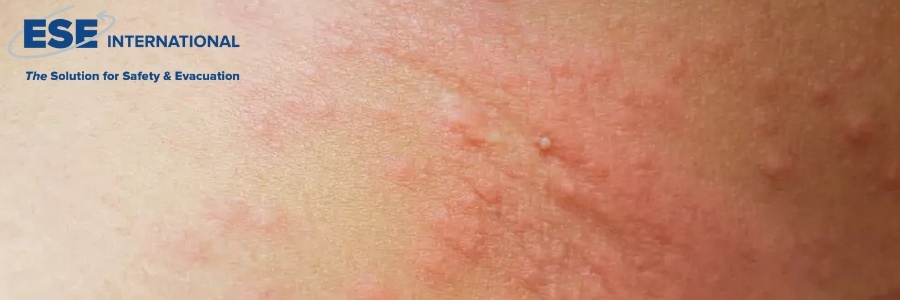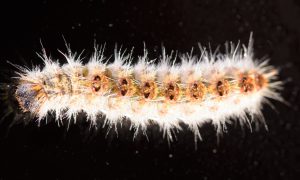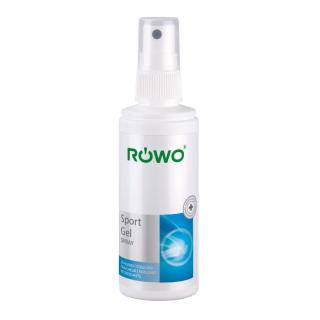The oak processionary caterpillar has been on the rise in the Netherlands for some time now and almost everyone now knows that the hairs of this little creature can cause quite a bit of nuisance. Think of eye complaints and skin rashes. It is therefore important to avoid contact with these stinging hairs. If the skin has come into contact with the processionary caterpillar and you get a rash, you naturally want a solution as soon as possible. But what can you actually do about oak processionary caterpillar rash? ESE International explains.
What is the processionary caterpillar and what does it do?
The oak processionary caterpillar is the larva of a moth. This larva nests in oak trees during the spring and summer months. The oak processionary caterpillar originally comes from Southern Europe, but in recent years the caterpillar has increasingly appeared in Central and Northern Europe. The caterpillars are easy to recognize, because they search for food in groups (in procession). The nests, which look like white thread-like webs, are located at the foot of oak trees as well as on the trunk and branches.
Stinging hairs
At first glance, the oak processionary caterpillar seems like a fairly harmless insect. However, the thousands of stinging hairs that the processionary caterpillar carries on its back can cause many complaints. The hairs are microscopically small, arrow-shaped and secrete a foreign protein, which makes them a risk to the health of humans and animals. Especially in the months of May, June and July, you have to be careful. The stinging hairs are then shot by the caterpillar and literally fly through the air.
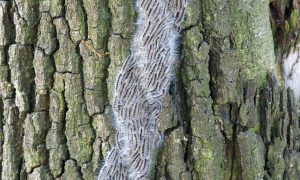
Common complaints caused by oak processionary caterpillars
If the skin has come into contact with the stinging hairs of the oak processionary caterpillar, symptoms such as bumps and redness can occur. This processionary caterpillar rash often occurs on the inside of the arms, but the neck, chest and back are not always spared. Other common complaints caused by oak processionary caterpillars are:
- Itch
- Swollen eyes
- Shortness of breath
- Coughing
- Dizziness
- Vomiting
- Fever
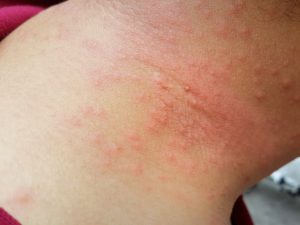
How do you prevent complaints caused by the oak processionary caterpillar?
We often say it: prevention is better than cure. To prevent oak processionary caterpillar rash and other symptoms, it is necessary to avoid contact with the processionary caterpillar. Stay away from oak trees that are infected. If that is not possible, wear covering clothing and wash the clothing at 60 degrees when you get home. Keep windows and doors closed if you live in an area with many oak trees and do not hang washing outside.
If you see an infected tree, do not do it yourself, but call in the municipality or a certified company to remove the nest.
Oak processionary caterpillar and allergy
If you come into contact with the oak processionary caterpillar more often, you can develop an allergy. This allergy can manifest itself in severe symptoms such as a swollen mouth, swollen eyes and acute shortness of breath. It is therefore extremely important to stay away from wooded areas where the processionary caterpillar has been spotted as much as possible.
What to do if you have complaints?
Have you unexpectedly come into contact with the oak processionary caterpillar and do you have a rash or other symptoms? Then fortunately there is much you can do yourself to reduce the symptoms. The most important thing is NOT to scratch. Scratching worsens the symptoms and can even cause infections.
It is advisable to remove the stinging hairs by stripping the affected skin with duct tape or another strong adhesive tape. Then rinse the skin well with running water and use a cooling gel or cream. Usually the processionary caterpillar rash disappears by itself within two weeks. Do the symptoms persist or do they get worse? For example, do you get breathing problems or a swollen mouth or tongue? Then consult your GP.
Cooling agents for processionary caterpillar rash
ESE International offers an extensive range of cooling creams and gels, the solution for oak processionary caterpillar rash. The products have a soothing and cooling effect, which immediately reduces the itching. Below you will find a selection from our range. All gels and creams are of high quality and are supplied at a competitive price.
Medical Disclaimer: The information in this article is for educational purposes only. For proper treatment of oak processionary caterpillar rash, it is advisable to consult a qualified medical professional. In case of severe blisters or lesions, call 911 or consult a physician immediately.

